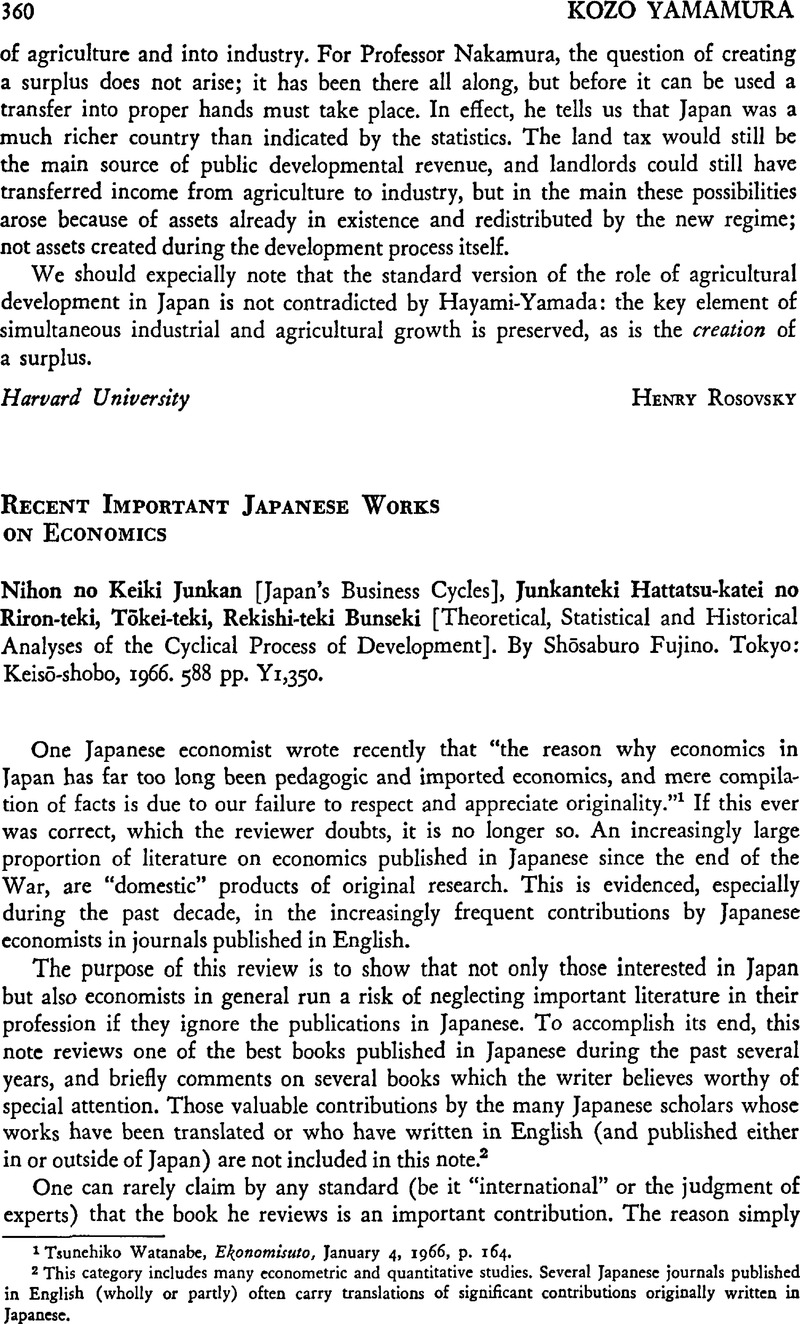No CrossRef data available.
Published online by Cambridge University Press: 23 March 2011

1 Tsunehiko Watanabe, Ekpnomisuto, January 4, 1966, p. 164.
2 This category includes many econometric and quantitative studies. Several Japanese journals published in English (wholly or partly) often carry translations of significant contributions originally written in Japanese.
3 Fujino, Shōsaburo, Nihon no Keiki Junkan (Keisō-shobō, 1965)Google Scholar. Fujino's book has received the 6th annual Ekonomisuto prize and the eighth annual Nippon Keizai Shimbun award since its publication.
4 Throughout the book, Fujino distinguishes these two meanings to eliminate ambiguity.
5 Fujino, p. 110.
6 Ibid., Preface, p. 3.
7 Ibid., p. 107.
8 Ibid., pp. 107–17 and Mathematical Appendix 1, pp. 522–37.
9 Ibid., pp. 99–100.
10 Briefly the derivations of these multipliers go as follows: (i) Substitute equation (i) into (5) and differentiate the result respect to I. (ii) Differentiate (Y/p) terms of the product of (i) respect to I. (iii) Combine the results of (ii) and (iii) to obtain equation (6) and substitute identities (s, ξ, and η) into it. (iv) Differentiate equation (3) respect to I to obtain equation (7). Then solve (6) and (7).
11 Fujino, pp. 150–203 and Mathematical Appendixes II and III.
12 Butsuriteki shisan is Fujino's expression, ibid., p. 154.
13 Kahei jōsu in Japanese, ibid., p. 162.
14 Ibid., preface, p. 3.
15 Ibid., pp. 302–17.
18 There have been nearly a dozen reviews and a few review articles on Fujino's book since its publication. Those interested readers can begin with Fujino's rejoinder to those comments and criticisms in Keizai Kenkyū, July 1967, no. 3, vol. 18. This lists all published reviews and review articles and presents Fujino's rebuttal to the criticisms made in these reviews. For this reviewer, the major weakness of Fujino's models—also to some extent his applications of models on empirical data—is that he is too anxious to prove his points. For example, in building the second model, Fujino must rely on an implicit but necessary assumption that the rate of operation of assets (capital utilization ratio) be constant. In testing the models, he tends to neglect to analyze the results which might not fit into his models as neatly as he wishes. The case in point is the evaluation of relative importance of three types of cycles mentioned in the text.
17 Fujino, pp. 24–41, and Statistical Appendix I.
18 Ibid., pp. 423–98.
19 As discussed below these arc integrated into historical chapters.
20 Fujino, pp. 292–461. These industries include: cotton textile, silk-reeling, communications and transportation, iron and steel, electric power and chemical (related to electricity) industries.
21 Miyohei Shinohara's review of Fujino's book in Tōyō Keizai, July 3, 1965, p. 119. Some might argue that the book is too long and could have been better integrated.